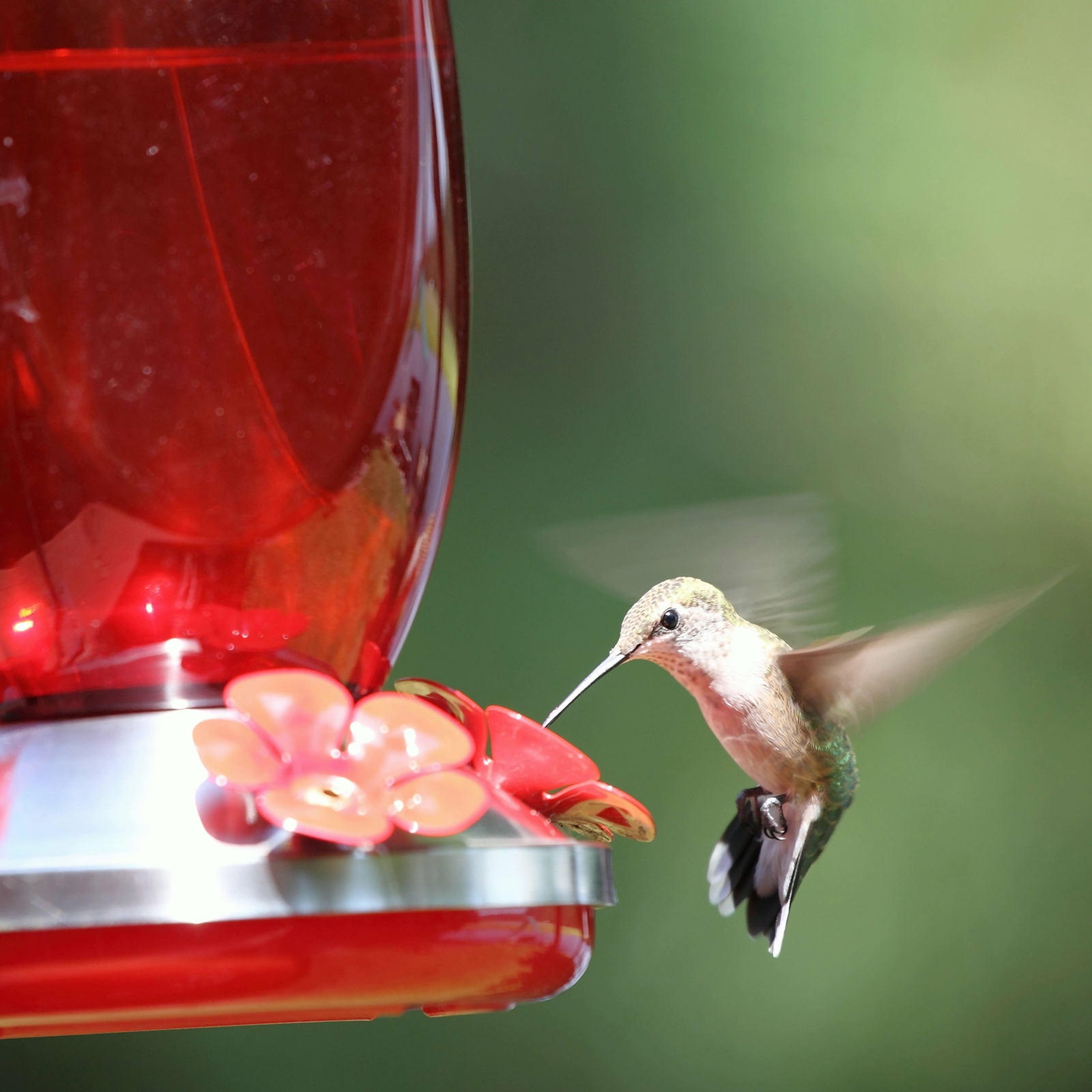Most people think of April 15 as tax day, but I think of it as a deadline to prepare my property for spring.
The first item on my list is to get out my hummingbird feeder, clean it and fill it. Hummingbirds migrate through Montana very early in the season. Birds like syrup that’s one-third sugar and two-thirds water. And even if the cold days linger, that sugar-water combination won’t freeze.
If you think it’s too early to get the feeders out, you’d be surprised. One morning shortly after I put the feeder out a few years ago, I saw something dark in color hanging from the perch. At first, I thought it was a brown bat. But I kept watching it. The tiny creature would lift its head, drink and put its head down again. I quickly realized it was a soaking wet, freezing cold hummingbird that must have just arrived after flying thousands of miles. If I hadn’t had the feeder up early, with snow everywhere, I don’t know what it would have eaten. Once you start feeding, they will depend on you, so don’t quit. I have generations of hummingbirds nesting on my property because I’ve been feeding them consistently for 11 years.
The next project is to put up the yellow jacket traps. This may seem early, but the objective is to catch the queens. In most cases, the workers do not survive the winter. The queen leaves her hiding place early in the spring to find a new site to lay her eggs and build her colony. There isn’t much food available at this time so the queens will be attracted to the traps. In July and August, when you notice you can actually eat your lunch on the deck without being swarmed, you will thank me. Most people wait until they see the mature worker wasps attacking their food later in the summer, before putting up traps. But by that point, there are thousands of them.
If you have bluebird houses, get them cleaned out. Bluebirds often arrive when snow is still on the ground. They will usually fledge their young by Mother’s Day. Place the boxes in pairs if you have tree swallows and 5 feet off the ground. The Flathead Audubon Society has a helpful website and Facebook page to learn more. These birds eat insects and prefer wide open fields over forests. I put an extra pole in front of my boxes about 6 feet away. The male bluebirds enjoy keeping watch over the nesting box and will chase off intruders from this perch.
One more tidbit I’d like you to remember for early spring is the landscape. I had the pleasure of listening to three presentations by Dr. Douglas Tallamy, entomologist and researcher from the University of Delaware, at the International Master Gardener conference in 2019. One of his talks focused on caterpillars. Fascinating, right? Stay with me. He reminded us that almost all birds feed caterpillars to their young. Why? Well, he had graduate students measure the amount of protein in different insects. Caterpillars are the most protein and nutrient-dense food source for young birds. Spiders and beetles are too scratchy to be forced down a baby bird’s throat and do not have the essential protein needed. Often when we see caterpillars, we rush off to find something to kill them. But he encouraged people to leave them alone if they’re on a tree or shrub. Trees and shrubs can tolerate quite a few caterpillars without a negative impact and generally, the worst thing they’ll do is nibble on leaves, which only creates an aesthetic problem. That said, do take care of them if they’re in your vegetable garden.
As a Montana State University agriculture agent and professor for 14 years, I helped people learn how to use pesticides correctly and conservatively. Identification is the first step in order to decide on a control method. Do I need to control this insect at all? Are there alternative methods of control? This brings us back to the summer yellow jacket wasp problem. You usually can’t spray your way out of this situation in August unless you find the nest. Prevention, by putting up the trap to catch queens in April, will drastically reduce the need to spray.
My goal has always been to provide education in order to help people solve land use challenges while respecting the environment. Let’s keep Montana the pristine place that it is by using wise land management practices. This has been my passion for over 45 years. In subsequent issues, we will talk about weeds, pastures, livestock, composting and a host of other topics. I’m looking forward to it.
For more, visit Pat McGlynn’s website at legacylanddesign.com
